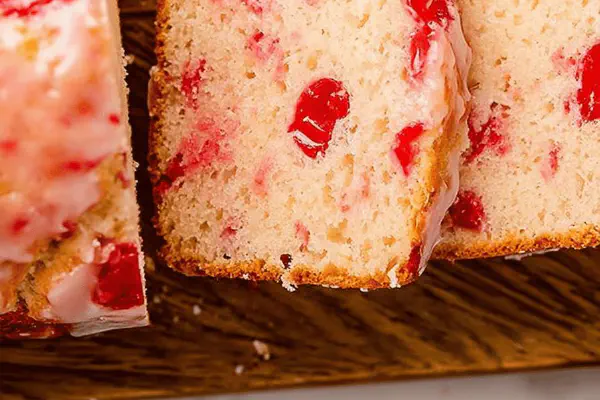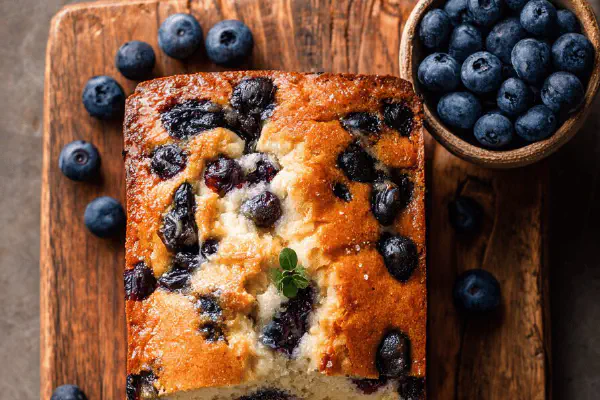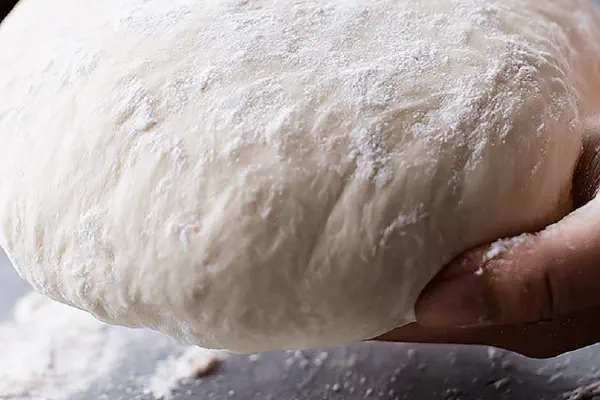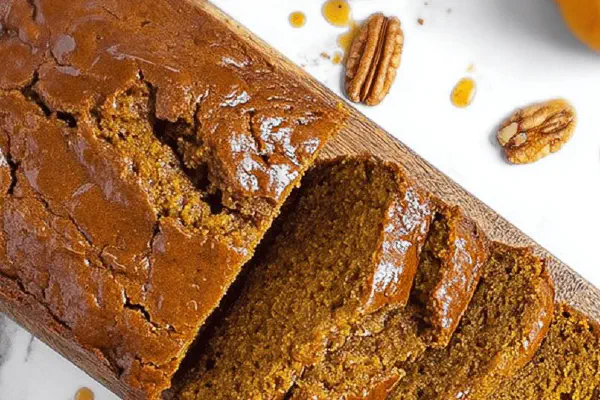Strawberry Rhubarb Loaf
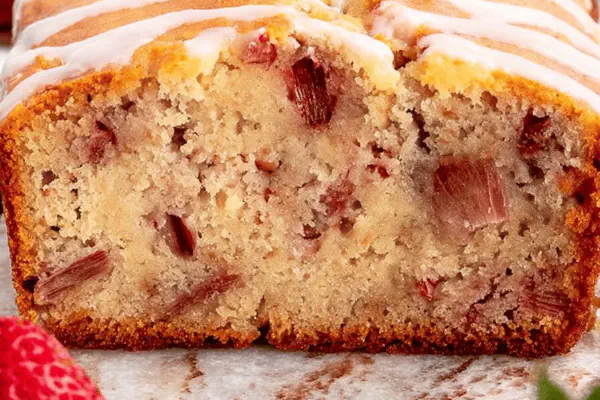
By Emma
Certified Culinary Professional
Ingredients
- 1 1/2 cups sugar
- 1 teaspoon vanilla extract
- 1/2 teaspoon almond extract
- 1/2 cup unsalted butter melted
- 1/2 cup buttermilk room temperature
- 3 large eggs
- 2 cups all-purpose flour
- 1/2 teaspoon salt
- 2 teaspoons baking powder
- 1 1/2 cups chopped rhubarb
- 1 1/2 cups diced strawberries
- Powdered sugar for glaze
- 1 tablespoon buttermilk for glaze
- 1/2 teaspoon strawberry extract for glaze
About the ingredients
Method
- Preheat the oven to 340F. This lower temp helps avoid that blistered crust I hate with this kind of bread.
- In a large bowl mix sugar, vanilla, almond extract, melted butter, buttermilk, and eggs. Whisk until smooth but not frothy. The melted butter incorporating warms the mix slightly. Good sign.
- In another bowl whisk flour, salt, baking powder together. Build dry component for control.
- Reserve 2 tablespoons of the flour mix. Sprinkle this evenly over the rhubarb and strawberries. Then toss thoroughly so fruits are coated. Keeps them suspended during baking rather than sinking like last time when fruit piles drowned bottom crust.
- Fold remaining flour into wet mixture gently. Stop after no visible flour streaks, no more! Overmix and crumb turns tough.
- Now fold in the floured fruits. Distribution even but light. Avoids black streaks or compact dense spots in loaf.
- Grease or line a 9x5 loaf pan with parchment—both work but parchment means cleaner edges for me.
- Pour batter evenly. Tap pan lightly on counter to even surface, no big air bubbles left.
- Slide into oven middle rack. Bake 50 to 60 minutes, but start checking around 50. Toothpick inserted should come out clean or with a few moist crumbs, not soggy. Surface color a light golden brown. Watch edges for pullback from pan sides, a good doneness signal.
- Remove and let cool in pan for 10 minutes. Then turn out onto wire rack to cool completely. Cooling in pan traps steam—loaf gets soggy if left too long.
- Make glaze by whisking powdered sugar with buttermilk and strawberry extract until thick but pourable.
- Drizzle over fully cooled loaf. The glaze hardens slightly and adds subtle sweetness without drowning fruit notes.
- Slice with serrated knife into 8 pieces. The serration helps prevent squashing soft crumb and slurry fruits.
Cooking tips
Chef's notes
- 💡 Flouring fruit prevents sinking but don’t overdo. Two tablespoons flour dusts fruit evenly. Toss thoroughly. Keeps fruit pockets light and stops wet spots. Adds slight coating barrier. Critical for even crumb and avoiding bottom fruit puddle.
- 💡 Mix wet first then dry. Fold flour gently into wet with care. Stop when flour streaks vanish. Overmix crushes crumb, toughens structure. Watch batter texture. Should be thick but foldable. No lumps but no runny mess.
- 💡 Oven temp set to 340F lowers risk of cracked or burnt crust. Bake slow. Watch edges pull from pan sides. That subtle gap signals done before toothpick dry. Crust turns golden but not dark. Avoid 350F which makes crust flash burn with tough edges.
- 💡 Butter swap okay with mild olive oil but expect flavor shift. Butter melts warms batter, impacts scent and browning too. Olive oil adds moist crumb but looses buttery aroma. Up to taste preference. Original calls for melted butter room temp mixed in.
- 💡 Glaze only goes on cool loaf or runny mess. Stir powdered sugar with buttermilk and strawberry extract until thick but pourable. Thin glaze ruins shine and runs into crumb. Drizzle lightly, let harden for subtle sweet finish without drowning tart fruit.
Common questions
Why flour fruit before folding?
Stops sinking in batter. Floured fruit suspended mid-batter during baking. Keeps fruit juicy but no dense wet patches. Without coating, fruit piles sink bottom crust and ruin texture.
Can I replace almond extract?
Vanilla can replace almond but subtle nutty depth lost. Strawberry extract works too but less balanced. Almond adds fresh background aroma. Leave it out only if no other option. Or combine small amount for layers.
What if loaf crust cracks?
Lower oven temp by 10 degrees first. Preheat fully. Crust cracks from sudden heat shock or oven fluctuations. Avoid too hot ovens or baking racks too low. Cover with foil if browning too fast late bake.
How to store leftover bread?
Wrap cool loaf tightly or store in airtight container. Keep at room temp max two days to avoid soggy spots. Refrigerate if humid but dries crumb. Freeze wrapped for longer storage, slice first for easy thaw.
